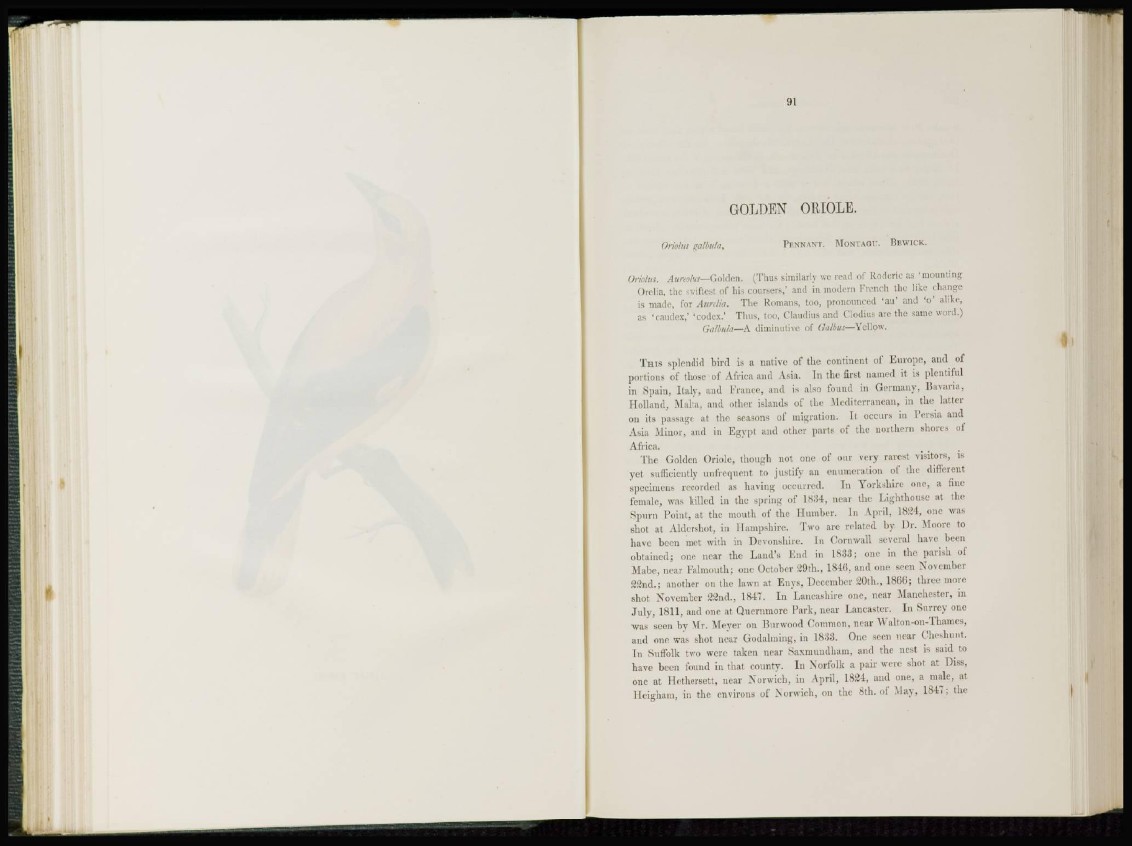
GOLDEN ORIOLE.
Oriohts galhuto, PENNANT. MONTAGU. BR WICK.
Oriohts. Aureolas—Golden. (Thus similarly we read of Roderic as 'mounting
Orclia, the swiftest of Ins coursers,' and in modern French the like change
is made, for Aurrfia. The Romans, too, pronounced *au' and 'o' alike,
as 'caudex,' 'codex.' Thus, too, Claudius and Clodius are the same word.)
Galbula—A diminutive of Galbus—Yellow.
T H I S splendid bird is a native of the continent of Europe, and of
portions of those of Africa and Asia. In the first named it is plentiful
in Spain, Italy, and France, and is also found in Germany, Bavaria,
Holland, Malta, and other islands of the .Mediterranean, in the latter
on its passage at the seasons of migration. It occurs in Persia and
Asia Minor, and in Egypt and other parts of the northern shores of
Africa.
The Golden Oriole, though not one of our very rarest visitors, is
yet sufficiently unfrequent to justify an enumeration of the different
specimens recorded as ha\ ing occurred. In Yorkshire one, a fine
female, was killed in the spring of 1834, near the Lighthouse at the
Spurn Point, at the mouth of the Ilumber. In April, 1824, one was
shot at Aldcrshot, in Hampshire. Two arc related by Dr. Moore to
have been met with in Devonshire. In Cornwall several have been
obtained; one near the Laud's End in 1833; one in the parish of
Mabe, near Falmouth; one October 29th., 1846, and one seen November
¡¿2nd.; another on the lawn at Enys, December 20th., 18(i(>; three more
shot November 22nd., 1847. In Lancashire one, near Manchester, in
July, 1811, and one at Quernmore Park, near Lancaster. In Surrey one
was seen by Mr. Meyer on Burwood Common, near Walton-on-Thames,
and one was shot near Godalming, in 1833. One seen near Cheshunt.
In Suffolk two were taken near Saxmundliam, and the nest is said to
have been found in that county. In Norfolk a pair were shot at Diss,
one at Hethersett, near Norwich, in April, 1824, and one, a male, at
Heigham, in the environs of Norwich, on the 8th. of May, 1847; the